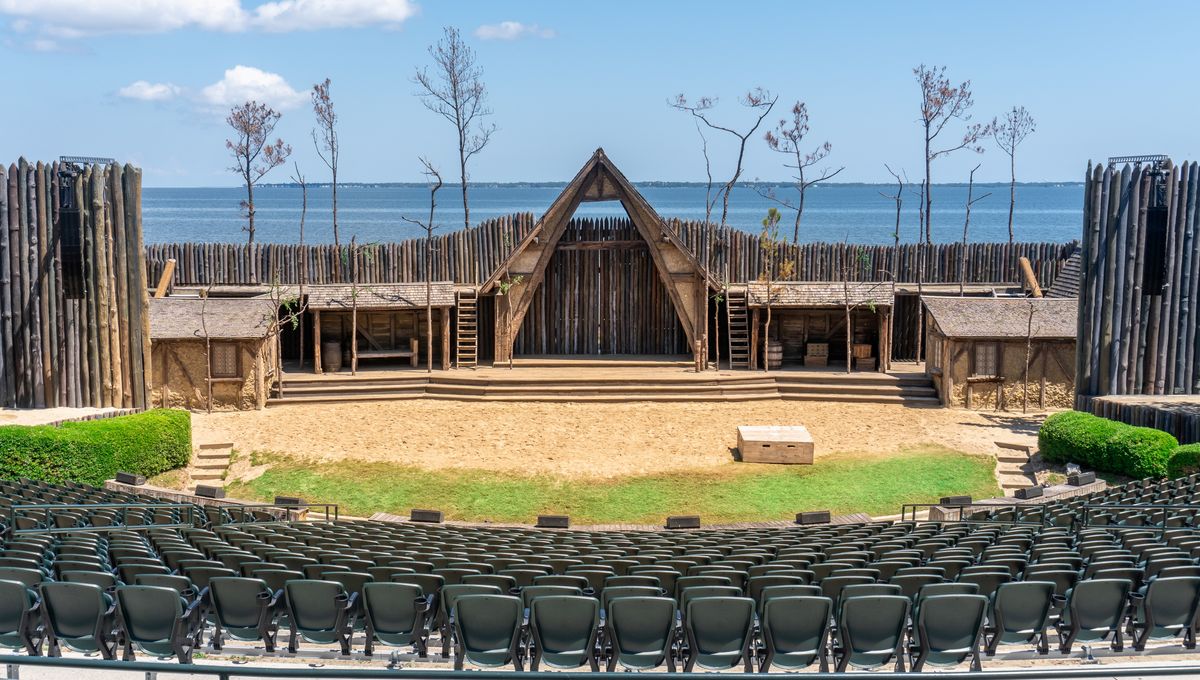
New archaeological evidence shines a light on the story of the now-famous settlers of the Roanoke colony. The new discoveries relate to a local Indigenous community that had ties to the settlers.
The supposed mystery
The story of the “lost colony” of Roanoke is well known today, but it is steeped in supposed mystery and speculation. In 1587, English colonizers led by explorer John White landed on Roanoke Island, which is located in what is Dare County, North Carolina, today.
This was not the first group to land on the island. An earlier attempt at forming a settlement had already failed two years previously. Still, this second attempt had learned from past mistakes and was, therefore, better provisioned and had more people ready to colonize the “new world”. However, even from their first days, the settler community had a rocky relationship with some of the Indigenous tribes that lived in the area.
Eventually, White returned to England to request more help for his burgeoning community, which meant he left behind his family – his wife, daughter, and granddaughter (called Virginia Dare, the first English child born in North America).
White had not intended to be gone for too long, but his return journey to Roanoke was delayed by the Spanish Armada attacking England. He eventually made it back to the island three years later, only to find the settlement was completely empty. There were no bodies at the site, no graves to suggest people had been killed. The only evidence they found was the words “CROATOAN” and “CRO” carved into a tree at the colony’s border, which likely referred to Croatoan Island, which was about 50 miles (80 kilometers) south.
White and his crew were soon forced to abandon the island due to storms, and so the missing settlers were supposedly lost to history.
Today, the “lost” Roanoke colony has become something of a cultural force in itself. There are various explanations as to what happened to the settlers, some of which have become a source of white nationalist pride. Some believe the colonists attempted to return to England on smaller ships, some argue that the Spanish attacked them, while others contend that the local Indigenous communities killed them all.
However, the most likely answer is the only one that actually takes notice of the evidence at the site. It is likely the colonists simply joined the local Indigenous communities and eventually integrated with them.
But while this is the most likely answer, there are still some controversies concerning which tribe or tribes may have received the wandering settlers. There are also questions as to where exactly the settlers lived while on the island itself.
Newly discovered village
In recent years, archaeologists who have investigated the colony have turned their attention to the Elizabethan Gardens in Manteo, which was once the site of the “Algonquian village of Roanoke”, an Indigenous community that had connections to the settlers.
The village was first identified in 2023 when shards of Algonquian pottery that dated to the 1500s were discovered, along with a ring of copper wire. This latter artifact, so archaeologists with the First Colony Foundation believe, may have been worn as an earring by an Indigenous tribe member.
“The copper ring”, Dr Eric Klingelhofer, the First Colony Foundation’s Vice President of Research explained in a statement, may “indicate contact with the English.”
Klingelhofer and his colleagues believe the ring was made in England and may have been used in trade. This is because, they argue, the Indigenous peoples at the time lacked the technology to produce the ring’s rounded strands. Of course, the English were not the only ones who could have made the artifact, but there is currently no evidence that the French or the Spanish had explored that far north at the time.
Additional evidence from the last few digs has added weight to the idea that the village was likely palisaded (encircled by high walls) and may have contained around nine houses. These, the archaeologists believe, may have belonged to the elite warriors as the working-class families would have lived outside the fortification where they raised crops.
“The objects we found are important, but it’s their relationship to different soils which are evidence of links to the past, and together that’s what tells the story,” Klingelhofer added. “And we’re beginning to see that this site was more of a capital with a tribal seat where a ruler or chief lived, and it would be palisaded to keep him safe.”
This chief would have presided over a territory that stretched from present-day Dare County, Roanoke Island, and parts of the mainland at the time when the English arrived.
“The new findings confirm a theory that matches what we know of the village,” added Klingelhofer. “It was described as a palisaded village because the explorers came here and recorded it. And these findings add to our story.”
The First Colony Foundation has scheduled further excavations for later this year.
Source Link: Archaeologists Shine New Light On The History Of The "Lost" Roanoke Colony